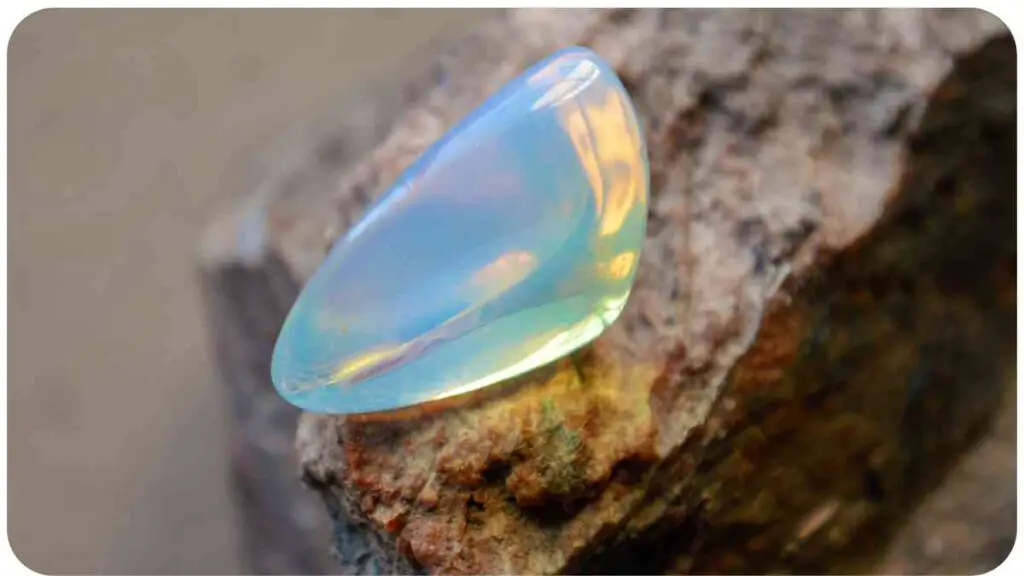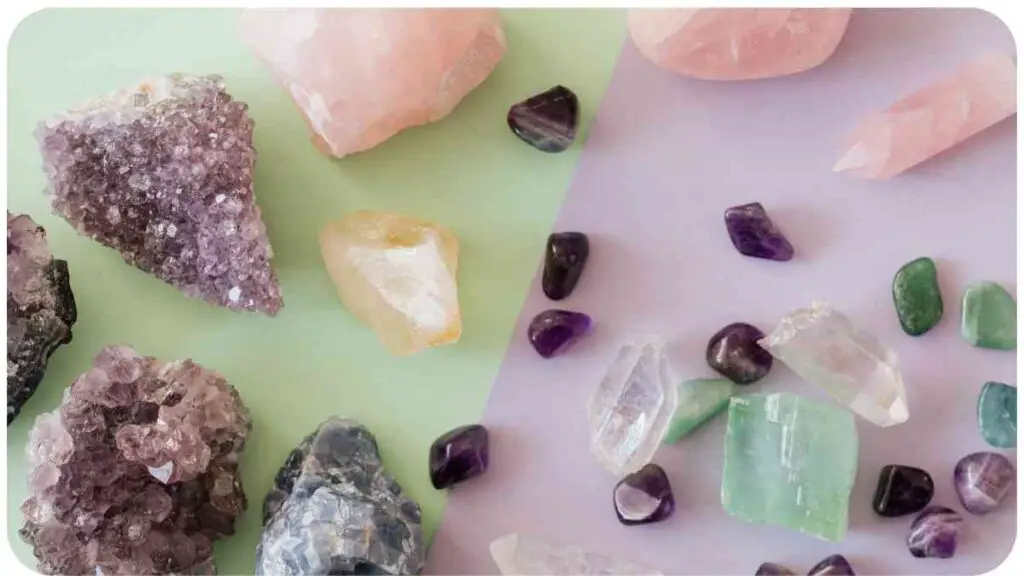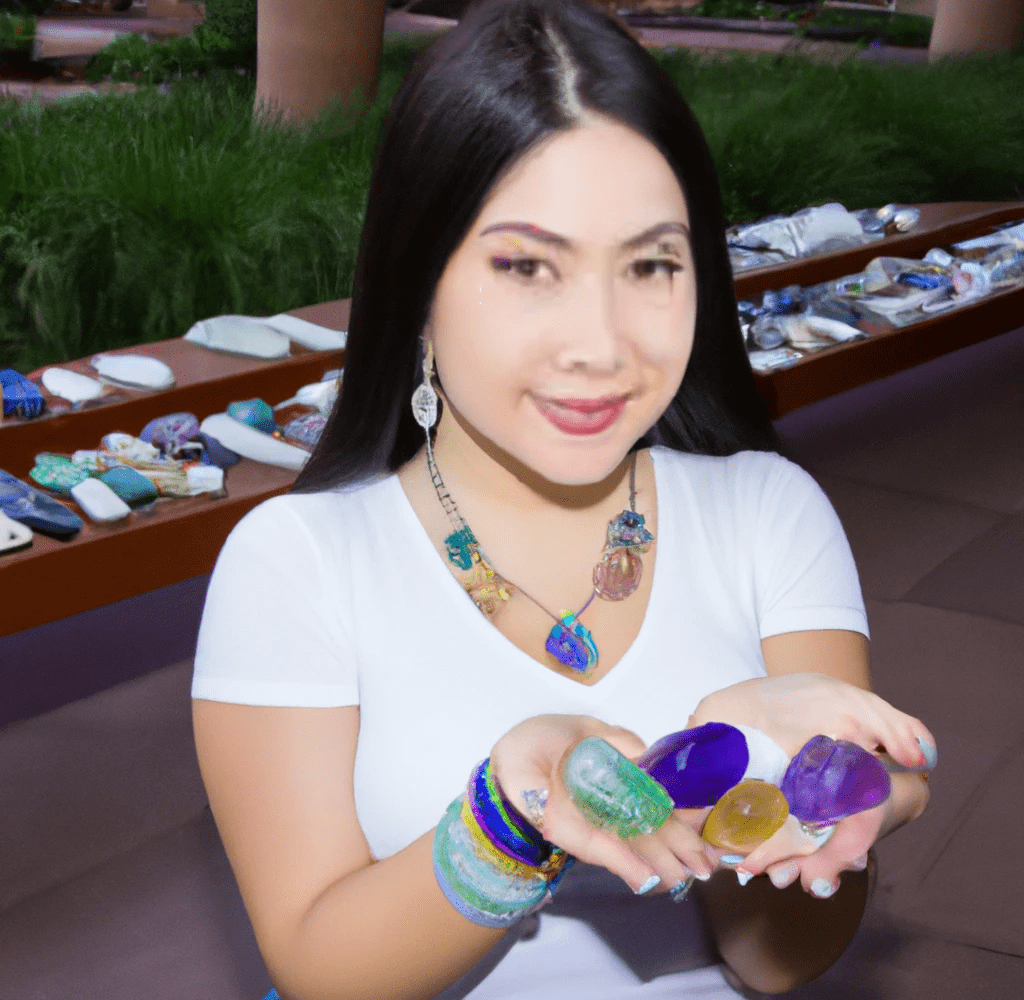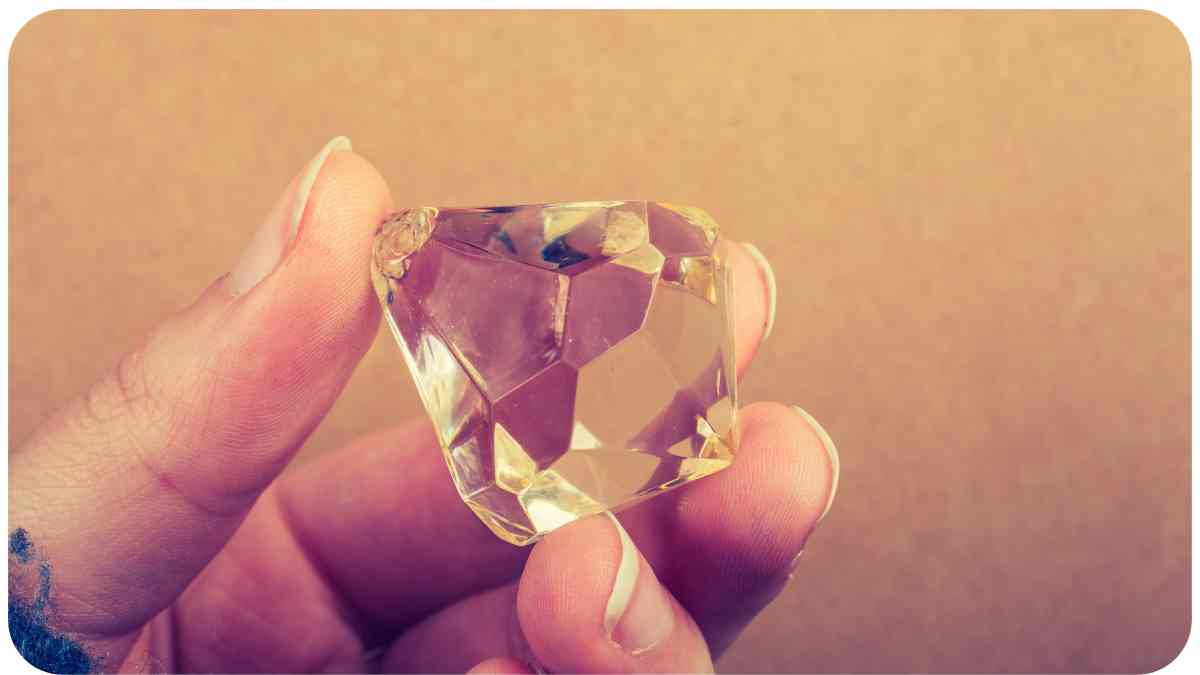Welcome to our guide on how to identify fake crystals. Crystals have become increasingly popular in recent years for their beauty and metaphysical properties. However, the market is flooded with fake crystals that may deceive buyers.
In this article, we will explore how to distinguish genuine crystals from imitations, ensuring that you invest in the real thing. Using our experience and expertise, we will provide you with valuable tips and tricks to detect fake crystals and make educated purchases.
| Key Takeaways |
|---|
| Distinguishing real crystals from fake ones is essential to ensure you’re investing in the genuine and powerful metaphysical properties of crystals. |
| Fake crystals may lack natural imperfections, have a uniform color, and feel lighter compared to genuine crystals. |
| Key indicators such as pricing, transparency, temperature, and energetic vibrations can help identify fake crystals. |
| Testing methods such as scratch tests, light tests, thermal conductivity tests, and sound tests can provide further evidence of a crystal’s authenticity. |
| Consulting reputable sources, including crystal shops and experienced enthusiasts, can enhance your knowledge and understanding of real crystals. |
| Owning authentic crystals offers countless benefits, including their positive energy, transformative effects, and potential value as heirlooms. |
| Further research, continuous learning, and hands-on experience are vital to becoming an expert in identifying real crystals. |
Understanding Crystals
Crystals are naturally occurring minerals that possess unique energetic properties. People often use crystals for their healing characteristics and spiritual benefits.
Each crystal has its own distinct energy and can be used for various purposes, such as enhancing intuition, promoting relaxation, or attracting love and abundance.
“When exploring healing properties, understand the belief” why people believe crystals have healing powers, as different perspectives shape experiences.
Why Identifying Fake Crystals Matters

It is crucial to differentiate between real and fake crystals because their properties and energies differ significantly. Authentic crystals are believed to carry the Earth’s energy and have a profound impact on an individual’s well-being. Fake crystals, on the other hand, lack these natural energies and may not provide the desired metaphysical effects.
Moreover, purchasing fake crystals can be a waste of money. Genuine crystals, especially rare or high-quality ones, can hold significant value. By being able to identify fakes, you can avoid spending your hard-earned money on imitations and invest wisely in authentic crystals.
Common Types of Fake Crystals
Before we delve into the indicators of fake crystals, let’s familiarize ourselves with some common types of imitations frequently encountered in the market. By knowing what to look out for, you can assess crystals more effectively.
Table: Common Types of Fake Crystals
| Fake Crystal | Description |
| Glass | These imitations resemble crystals but lack natural properties. |
| Dyed Minerals | Natural stones that have been altered with artificial dyes. |
| Composite Crystals | These are manufactured using pieces of real crystals |
| Synthetic Crystals | Lab-grown crystals that replicate the appearance of natural ones. |
| Plastic | Inexpensive plastic imitations made to resemble crystals. |
Tips to Identify Fake Crystals
Identifying fake crystals can be challenging, but with these key indicators, you can become a knowledgeable buyer. Keep in mind that some crystals may exhibit only one or a combination of these characteristics, so it’s vital to consider multiple factors during your evaluation.
“In the search for truth, skepticism arises,” are healing crystals just a hoax? Let’s delve deeper into the scientific and metaphysical aspects.
Table: Key Indicators of Fake Crystals
| Indicator | Description |
| Too Perfect | Fake crystals often have a flawless appearance without any natural imperfections. |
| Uniform Color | Genuine crystals may have variations in color, while fake crystals tend to have a uniform hue. |
| Lightweight | Fake crystals are typically lighter than their real counterparts. |
| Unusual Pricing | Prices that seem too good to be true may indicate a fake crystal. |
| Lack of Transparency | Authentic crystals allow light to pass through, while fake ones may appear cloudy or opaque. |
| Cold to the Touch | Real crystals feel cool or room temperature, while fake crystals may feel warm or plastic-like. |
| Inaccurate Terminology | Sellers using incorrect or misleading terminology may be selling fake crystals. |
| No Energetic Vibrations | Genuine crystals emit subtle energy vibrations when held or touched. |
By observing these indicators, you can increase your chances of distinguishing real crystals from fakes. However, it is essential to note that trusted sources and expert opinions can validate your findings.
Testing Methods for Authenticity
In addition to the key indicators, there are various testing methods you can use to further authenticate crystals. These methods help provide concrete evidence and enhance your confidence in identifying genuine crystals.
Discover the allure of crystal-infused water,” crystal water bottles: are they safe? Explore the benefits and potential concerns surrounding this trend.
Table: Testing Methods for Authenticity
| Testing Method | Description |
| Scratch Test | Real crystals have a higher hardness and should not scratch easily, while fakes may show scratches. |
| Light Test | Shining a light through a crystal can reveal its internal structure and transparency. Genuine crystals allow light to pass through clearly. Fake crystals may appear dull or block the light. |
| Thermal Conductivity Test | Natural crystals are good thermal conductors and will feel cool in your hand. Fake crystals may feel warm due to their lower conductivity. |
| Sound Test | Tapping crystals together produces a resonating sound. Genuine crystals have a distinct sound, while fake ones may sound dull or plastic-like. |
By employing these testing methods while considering the key indicators, you can develop a more thorough understanding of the crystal’s authenticity. It is essential to note that while these methods can provide valuable insights, they might require some practice to master.
Resources for Identifying Real Crystals

Fortunately, numerous resources are available to help you on your journey to identify real crystals. Some trustworthy sources include reputable crystal shops, gemologists, and experienced crystal enthusiasts.
Consult books, online forums, and social media platforms dedicated to crystals for valuable insights and recommendations. By expanding your knowledge and seeking the guidance of experts, you can become more confident in your ability to differentiate between real and fake crystals.
Benefits of Owning Real Crystals
Investing in genuine crystals offers numerous benefits. Real crystals possess natural energies that can influence emotions, enhance meditation, promote overall well-being, and aid in spiritual growth.
They are not just beautiful, but also powerful tools that can positively impact your life. By owning authentic crystals, you can tap into their unique properties and experience their transformative effects firsthand.
Moreover, real crystals hold significant value and can be passed down as heirlooms. They connect us to Earth’s ancient wisdom and bring a sense of grounding and connection.
A collection of genuine crystals becomes a treasure trove of positive energy and serves as a constant reminder of our deep connection to the natural world.
“To purify crystals, harness the power of salt,” learn how to cleanse crystals with salt and enjoy their renewed energy.
Conclusion
In conclusion, being able to identify fake crystals is crucial for anyone interested in harnessing the genuine power and beauty of these precious minerals. By cultivating expertise, experience, authoritativeness, and trustworthiness, we can confidently navigate the crystal market and make informed purchasing decisions.
Throughout this article, we have discussed the importance of distinguishing real crystals from imitations, explored common types of fake crystals, and provided essential tips and testing methods.
Remember to assess key indicators such as appearance, weight, pricing, and energy vibrations. Additionally, utilize testing methods like scratch tests, light tests, thermal conductivity tests, and sound tests to further verify authenticity.
By combining these strategies, consulting reliable resources, and leaning on personal experiences and expertise, you can build a collection of genuine crystals that not only beautify your space but also enhance and enrich your life. Embrace the power of authenticity and embark on a crystal journey that truly resonates with your mind, body, and spirit.
“Personalize your crystal’s intention with programming,” explore how to program your crystals for manifesting desired outcomes and spiritual connections.
Further Reading
Here are some additional resources that can help you deepen your understanding of identifying real crystals:
WikiHow – How to Tell if a Crystal Is Real: This WikiHow article provides step-by-step instructions and visuals to help you determine the authenticity of crystals. It covers various testing methods and key indicators to look out for.
Crystals Rock – How to Spot Fake Crystals: This informative blog post from Crystals Rock offers valuable insights and tips for identifying fake crystals. It includes detailed explanations, real-life examples, and images for reference.
Tiny Rituals – How to Tell if a Crystal Is Real: Tiny Rituals provides a comprehensive guide on detecting real crystals. The article delves into the importance of authenticity and provides practical advice and testing methods to aid you in your crystal identification journey.
Frequently Asked Questions
Is it common to find fake crystals in the market?
Yes, fake crystals are quite common in the market. Due to their increasing popularity, there is a demand for inexpensive imitations that resemble genuine crystals. It is crucial to be aware of the presence of fakes and learn how to differentiate them.
What are the consequences of buying fake crystals?
The consequences of buying fake crystals include the disappointment of not receiving the desired metaphysical effects and wasting your money on an imitation. Additionally, fake crystals may lack the energetic properties and beauty that genuine crystals offer.
Are there specific crystals that are commonly counterfeited?
Yes, some crystals are more commonly counterfeited than others. High-demand crystals such as amethyst, quartz, and citrine are often imitated due to their popularity and market value. It is important to be vigilant when purchasing these types of crystals.
Can I rely solely on online sources to identify real crystals?
While online sources can provide valuable information, it is best to rely on a combination of resources. The ability to physically inspect and feel a crystal can be crucial in determining its authenticity. In-person visits to reputable crystal shops or consulting with experienced gemologists can enhance your credibility in identifying real crystals.
How can I enhance my expertise in identifying real crystals?
Building your expertise takes time and practice. Engaging with the crystal community through forums, workshops, and social media platforms can provide opportunities to learn from experienced crystal enthusiasts. Continuous research, observing real crystals, and seeking guidance from trusted sources will contribute to building your expertise in this field.

Hi, I’m Hellen James and I’m the founder of Unified Crystals. I’ve been working with crystals for years now, and it’s been an incredible journey. Throughout history, crystals have been valued for their ability to promote healing and enhance spirituality.


